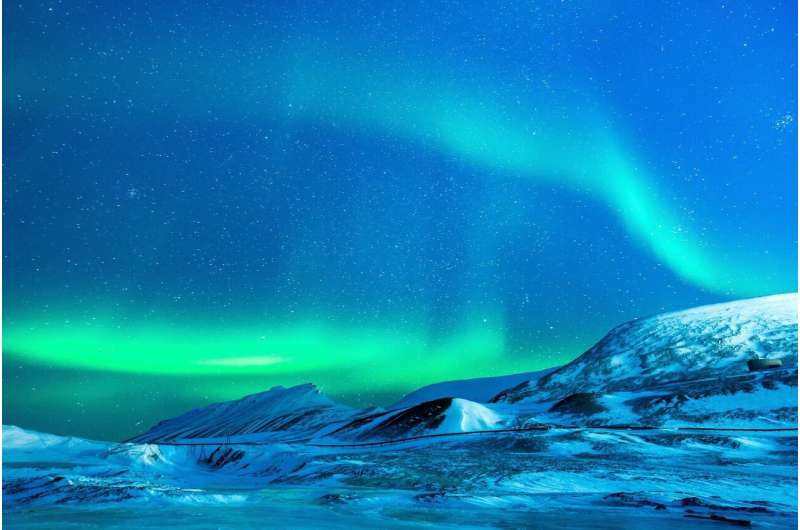Credit: CC0 Public Domain
Arctic tundra, a unique ecosystem characterized by permafrost, contributes to approximately 45% of all Arctic methane sources and therefore plays an important role in global carbon cycle. Arctic region is warming faster than other global regions over the last century. Warmer temperature accelerates soil organic carbon decomposition in permafrost soils, resulting in larger net methane emissions.
However, due to limited data availability, there are still quite a few things remain unknown, e.g., what are the commonalities and differences in methane emissions during spring thaw versus autumn freeze? How do freeze-thaw cycles influence methane emissions in spring and autumn shoulders?
"The transitional periods between cold season and growing season when soils are not completely frozen is called 'shoulder season,'" said Dr. Bao Tao with the Institute of Atmospheric Physics (IAP) of the Chinese Academy of Sciences (CAS).
Bao is the lead author of a recently published study in Global Change Biology. The study was led by scientists from IAP, in collaboration with University of Nebraska-Lincoln and Argonne National Laboratory, U.S..
Bao's team found that the shoulder seasons contributed to about a quarter of annual total methane emissions. "Soils in the spring and autumn shoulder seasons experience repeated freeze-thaw cycles," said Bao. "The methane emissions under these complex processes are often underestimated because of lack of measurements and unknown mechanisms."
The new study highlights three to four times higher contribution of autumn freeze methane emission to total annual emission than that of spring thaw. The soils have a much higher levels of moisture, microbials and organic carbon during Autumn freeze than spring thaw. These conditions provide beneficial environment for methanogens activities, resulting in a much higher methane production and emissions during autumn freeze.
"Soils freeze gradually from the top layer when below-ground methanogens activities remain. Therefore, near-surface soil temperatures cannot completely reflect the freeze-thaw processes in deeper soil layers. The differences in freeze-thaw and thaw-freeze processes have a direct effect on transportation of methane from soil to the atmosphere," said Dr. BAO.
"This study provides potentials for improvements of process-based models. It is crucial to further evaluate methane emissions during non-growing season to enhance our understanding of methane budget and carbon-climate feedback in Arctic," said Dr. Xu Xiyan, the corresponding author of the study.
More information: Tao Bao et al. Much stronger tundra methane emissions during autumn‐freeze than spring‐thaw, Global Change Biology (2020). DOI: 10.1111/gcb.15421
Journal information: Global Change Biology
Provided by Chinese Academy of Sciences
























